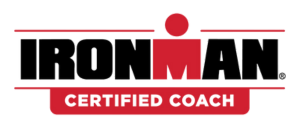The distances won’t differ much between Ironman events. What can vary a lot is the elevation profile of the bike and running courses.
I have checked the courses of all Ironman 140.6 in North America, Europe, and Oceania. Let’s have a look below:
ELEVATION GAIN – HOW TO MAKE IT COMPARABLE:
As you probably know already, having good elevation numbers is quite tricky. For the same course, watches will record different numbers. Softwares will use different methods, and race organizers don’t always communicate the elevation numbers.
With the below methodology, I tried to make the data as comparable as possible to compare the races with each other.
- I checked all Ironman races in North America, Europe, and Oceania and looked for an athlete who recorded his race on Strava.
- I downloaded the bike and run courses from Strava and uploaded it to the route planning software Komoot (website link, no affiliation). From there, I created a new route and took the elevation gain from it.
IRONMAN RACES IN NORTH AMERICA:
On the bike, the average elevation gain is around 3,000 ft. With its 100 ft of elevation gain, IM Maryland is probably as flat as it can be for such a long distance. If you are looking for a climbing challenge, check out IM Mont-Tremblant, which has 7,055 ft of climbing.
On the run, the average elevation gain is 540 ft. IM Lake Placid is the only one with more than 1,000 ft of elevation gain.
IRONMAN RACES IN EUROPE:
Compared to North America, the IM races in Europe include way more climbing, a whopping average of 4,700 ft! Ironman France in Nice has only 9,220 ft of elevation gain, something we are doing on all our Sunday rides, right? 😀
The run courses in Europe average 550 ft of elevation gain. IM Wales (1,475 ft) and IM UK (1,050 ft) are the two real outliers here.
IRONMAN RACES IN OCEANIA:
With an average elevation gain of 2,700 ft on the bike and 480 ft on the run, you can find one relatively flat race (IM Western Australia) and three others which are a bit more challenging.
I hope this article helped you understand the different course profiles of Ironman races. If you want to learn more about the time you will need to finish those races, have a look at this article I wrote: Average Ironman Time Per Age Group And Gender


